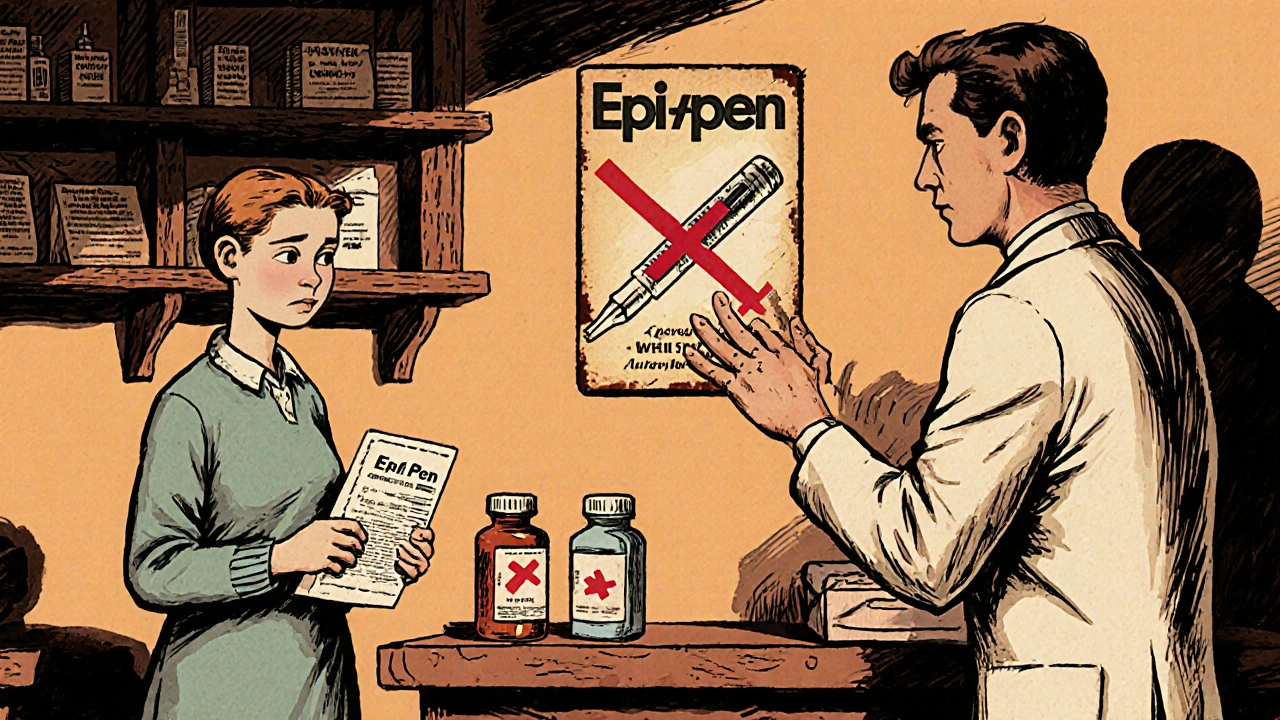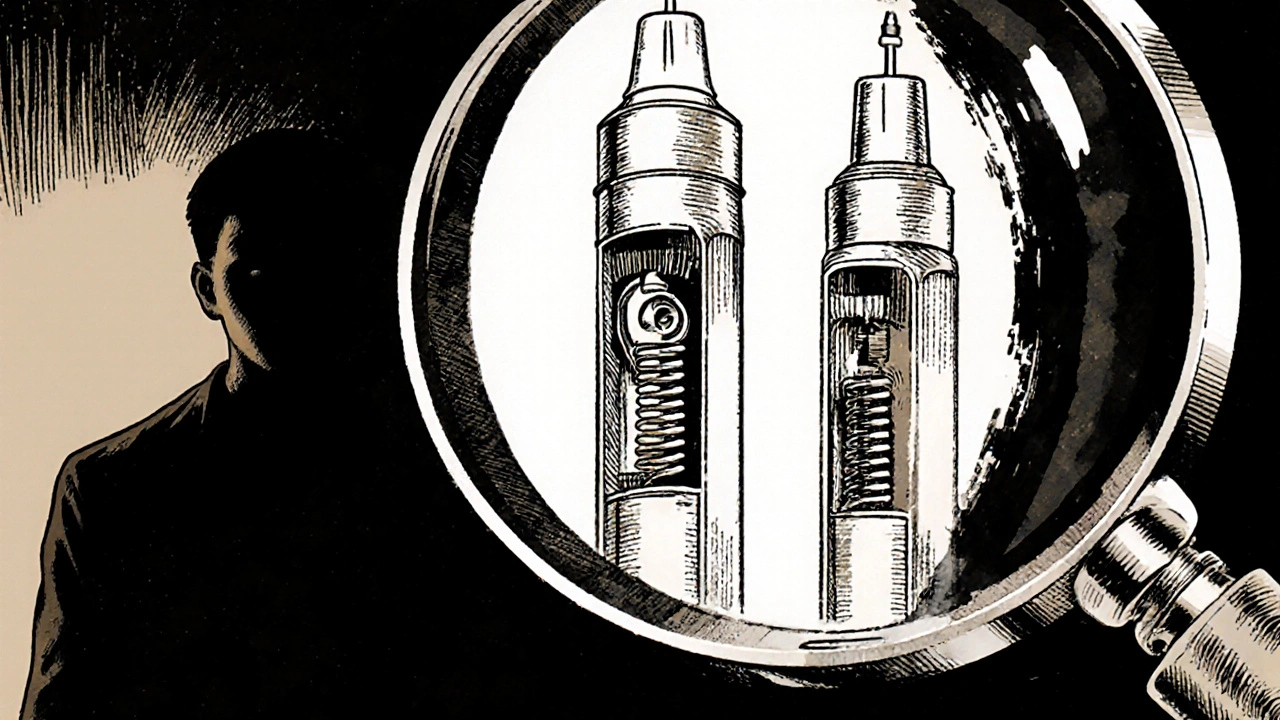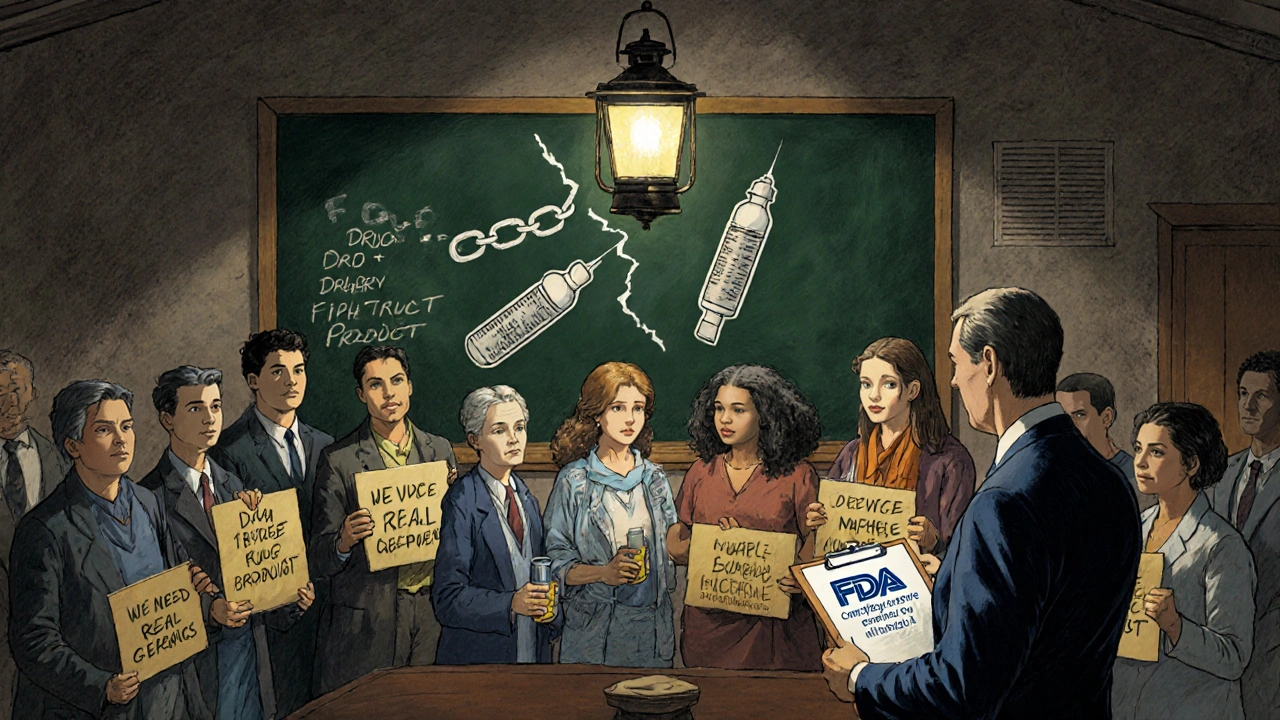Generic Combination Products: When Multiple Generics Equal One Brand
 Nov, 25 2025
Nov, 25 2025
Imagine you need an EpiPen. Your doctor prescribes it. You go to the pharmacy and ask for the generic version. But instead of one cheap, easy-to-get pill, you’re told you need two separate things: a generic epinephrine vial and a specific generic auto-injector device. And even then, they might not be approved to work together. This isn’t a glitch. It’s the reality of generic combination products.
What Exactly Is a Combination Product?
A combination product isn’t just two medicines mixed together. It’s a product that brings together two or more different types of medical components - like a drug and a device - into one system that works as a single unit. Think of it like a coffee maker and ground coffee being sold as one thing: you can’t make coffee without both parts working together. The U.S. Food and Drug Administration (FDA) defines these as products where:- Components are physically or chemically combined (like a prefilled syringe with medicine inside)
- Components are packaged together (like an inhaler and its medication in the same box)
- Components are sold separately but labeled to be used together (like a generic drug and a specific injector device meant only for that drug)
Why Can’t You Just Swap Out the Drug?
Here’s where things get messy. For regular pills, if the brand name is expensive, you get a generic version - same active ingredient, same effect, cheaper price. That’s been working since 1984. Today, over 90% of prescriptions in the U.S. are filled with generics. But with combination products, it’s not that simple. The device isn’t just packaging. It’s part of the treatment. If the device doesn’t deliver the drug the exact same way - same pressure, same timing, same dose - then the medicine might not work right. That’s why the FDA looks at the Primary Mode of Action (PMOA): the single most important way the product works. If the device is what makes the product work (like an auto-injector triggering the needle), then the whole thing is treated like a medical device, not just a drug. So here’s the problem: if you have a branded combination product - say, an EpiPen with its own injector - and you want a generic version, you can’t just swap the epinephrine and keep the original injector. The generic epinephrine might be approved. The generic injector might be approved. But together? They’re not automatically interchangeable. The FDA requires proof that the generic version works exactly like the brand - not just the drug, but the whole system.The Hidden Cost of Complexity
Developing a generic version of a combination product isn’t like copying a pill. It’s like reverse-engineering a Swiss watch. Manufacturers have to prove:- The drug matches the original in strength, purity, and how it’s released
- The device performs identically - same button feel, same click sound, same injection speed
- Patients can use it safely without training - this is called human factors engineering
- The whole package works together under real-world conditions

What This Means for Patients
You don’t need to be a pharmacist to feel the impact. Patients are paying more - up to 37% more - for these so-called "generic" combinations than they would for regular generics. Some can’t get them at all. Pharmacists report that 68% have run into substitution confusion in the past year. Patients show up with a prescription for an EpiPen, get handed a generic epinephrine vial, and ask why they can’t just use their old injector. The answer? They can’t. The injector is part of the product. If it’s not the exact approved version, it’s not legally substitutable. One Reddit thread from August 2024 had 287 comments from patients and pharmacists frustrated by this exact issue. A pharmacist wrote: “The auto-injector device is considered part of the product, so even if you have a generic epinephrine, you need the specific generic auto-injector approved for substitution - which often doesn’t exist yet.” Healthcare providers say 57% have seen treatment delays because of this confusion. On average, patients wait 3.2 extra business days to get the right combo. That’s not just inconvenient. For someone with severe allergies, asthma, or diabetes, it’s dangerous. Patient advocacy groups documented 217 cases in 2023 where people couldn’t access a therapeutic equivalent because the generic combo wasn’t available - a 29% jump from the year before.Why Are We Still Stuck?
The laws that let pharmacists swap out generics for brand-name drugs were written in 1984. They were designed for pills and injections - not for devices that deliver medicine. There’s no legal framework that says: “If you have a generic drug and a generic device, and they work together, you can substitute them for the brand.” State laws vary wildly. Some let pharmacists substitute if the prescriber allows it. Others don’t mention combination products at all. That creates chaos. A patient in California might get their generic combo. The same patient in Texas might be told it’s not allowed. The FDA knows this. In April 2024, they released new guidance to clarify what’s needed for device comparisons. In June 2024, they launched “Complex Generic Initiative 2.0,” promising to cut approval times by 30% by 2026. They’ve hired 32 more reviewers just for these products. But progress is slow. Only 14 states have introduced bills to update their substitution laws. California and Massachusetts are leading, but most haven’t moved.
What’s the Future?
Right now, branded combination products hold 68% of the market. Generics? Just 12%. That’s not because people don’t want cheaper options. It’s because the system isn’t built to deliver them. The goal isn’t to make every combination product generic overnight. It’s to make sure that when multiple generics can safely replace a brand - they’re allowed to. That means updating laws, training pharmacists, educating patients, and giving manufacturers clearer rules. Some experts say we need a new category: “therapeutically equivalent combination products.” That would mean if a generic drug and a generic device are proven to work together just like the brand, they get a special stamp of approval - and pharmacists can substitute them automatically. Until then, patients and providers are stuck playing guesswork with life-saving treatments. The technology exists. The science is there. What’s missing is the system that lets it work for people.What You Can Do
If you or someone you know uses a combination product:- Ask your doctor: “Is there a generic version that includes both the drug and device?”
- Ask your pharmacist: “Is this the only approved combo? Or can I get the drug and device separately?”
- Check the FDA’s website for approved generic combination products - they list them by product name
- If you’re denied a substitution, ask for the reason in writing. It might be a policy issue, not a safety one
- Join patient advocacy groups. Your voice helps push for change
Can I substitute a generic drug with a branded device for a combination product?
No. Even if the generic drug is chemically identical, the device is considered part of the product. Using a branded device with a generic drug, or vice versa, is not legally or therapeutically equivalent. The FDA requires the entire system - drug and device - to be approved together as a single unit for substitution.
Why are generic combination products so expensive?
Developing a generic version of a combination product costs $2.1-$3.7 million more than a regular generic, and takes 18-24 months longer. The extra cost comes from proving the device works exactly like the original - including human factors testing, usability studies, and comparative analysis. Fewer companies can afford this, so competition stays low and prices stay high.
Are there any generic combination products available right now?
Yes, but they’re rare. Examples include generic versions of EpiPen (adrenaline auto-injectors), certain asthma inhalers like ProAir HFA, and some insulin pens. However, only 12% of the combination product market is made up of generics, compared to 90% for regular drugs. Many popular combination products still have no generic alternatives.
What’s the difference between a combination product and a dual-packaged product?
A combination product is designed so the components work together as one therapeutic unit - like a prefilled syringe. A dual-packaged product is two separate items sold together but not intended to function as one system. For example, a prescription drug and a separate pill organizer might be packaged together, but they’re not a combination product. Only the former is regulated as a single medical product by the FDA.
Why can’t pharmacists substitute generic components like they do with pills?
Traditional generic substitution laws assume the active ingredient is the only thing that matters. But with combination products, the device controls how the drug is delivered. If the device doesn’t deliver the same dose, timing, or pressure, the drug won’t work the same way. That’s why the FDA treats the whole system as one unit - not two separate parts.
